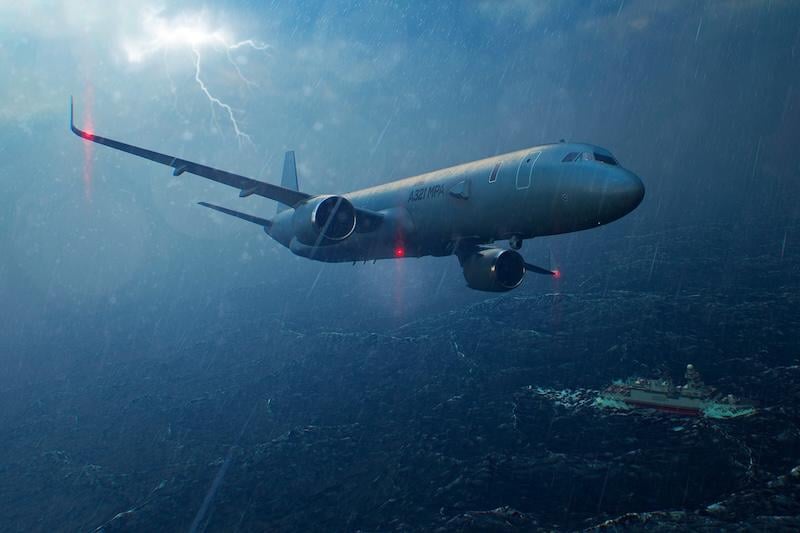Airbus Ready To Green Light A320 Special Mission Platforms
Details
More Products & Services
Products & Services
Home - Aviation Group Marketing
Aviation Week Network
120 data points on over 156,000 commercial and business aviation aircraft, including military transports. Discover the most trustworthy resource for the complete aircraft history, plus ad hoc reports, month-over-month trend analysis and details on expected deliveries through 2050.
Aerospace | Aviation Week Network
Aviation Week Network
https://aviationweek.com/themes/custom/particle/dist/app-drupal/assets/awn-logo.svg
People

Andrea Rossi Prudente
Aviation Week Network

Anthony Lim
Aviation Week Network
Sales director

Becca Balmes
Aviation Week Network

Belinda Tan
Aviation Week Network

Brian Everstine
Aviation Week Network
Editor

Eddie Krankowski
Aviation Week Network
Assistant Manager, Tradeshows

erving dockery
Aviation Week Network

Lisa Tan
Aviation Week Network
Senior Marketing Manager

Mark Thomas
Aviation Week Network
Description
LE BOURGET—Airbus is establishing interconnected teams between its defense and commercial businesses as it looks to establish the A320 family of airliners for special missions.
After a number of false starts, the airframer sees emerging opportunities that could pave the way for wider use of the narrowbody for a range of military missions.
At the heart of this effort are a series of studies supporting France's Patmar requirement for a new maritime patrol aircraft based on the A321XLR that would replace the Dassault Atlantique 2, and an Indian plan to convert secondhand A321s into airborne early warning aircraft.
Which of these projects could be first to materialize remains unclear, says Maria Angeles Marti Martinez, Airbus Defense and Space's head of Tanker, Transport and Mission Programs.
The most crucial thing is that the company is now “building, exploring [and] increasing the core knowledge” built up over 20 years of developing special mission variants of the C295 airlifter.
Work on the C295 has been a “great pilot to develop our abilities [and] skills to convert aircraft and militarize them,” Martinez told Aviation Week on the opening day of the Paris Air Show.
“We've been working for more than a year and a half with Airbus commercial on how to create interdivisional teams, putting together engineers, core centers, programs, suppliers—fully interconnected to be able to be ready to deliver,” she says. “Now we are putting all this knowledge together to offer new capabilities in the commercial derivatives, and we feel very ready to develop sigint solutions, AWACS solutions and maritime patrol solutions on the A321.”
France shortlisted the A321XLR late last year as a potential platform for a maritime patrol aircraft, deciding against a derivative of the Dassault Falcon 10X business jet.
Airbus had originally proposed the A320neo but decided to move to the XLR variant as it enables a large weapons bay to be fitted behind the wing, and the XLR configuration increases the endurance and range of the platform. Airbus is now further de-risking the proposal, Martinez says, maturing the design and configuration, as well as developing the industrial solution required to build it without adding considerable cost to the aircraft. “It's a long race—we are providing data and analyzing to see [how] we can be the best solution,” Martinez says. It is currently undecided whether the aircraft would be converted from green A321XLRs from the production line or whether a separate line would be required because of the extensive modifications.
With the studies due to complete in the next 18 months, it is hoped the maritime patrol aircraft could be contracted in 2027.
Airbus is also exploring from what altitudes the maritime patrol A321 would operate, and whether the airframe would need to be beefed up for low-altitude operations.
Although Boeing's P-8 Poseidon has snapped up much of the market share, Martinez says there is still a market for a maritime patrol A321.
“We believe we can provide a better aircraft with more capabilities and it will have the possibility to have more adaptations for customer nations,” Martinez says. “The need is there. The tensions in the oceans are increasing day by day, and the number of submarines is increasing exponentially.”
After a number of false starts, the airframer sees emerging opportunities that could pave the way for wider use of the narrowbody for a range of military missions.
At the heart of this effort are a series of studies supporting France's Patmar requirement for a new maritime patrol aircraft based on the A321XLR that would replace the Dassault Atlantique 2, and an Indian plan to convert secondhand A321s into airborne early warning aircraft.
Which of these projects could be first to materialize remains unclear, says Maria Angeles Marti Martinez, Airbus Defense and Space's head of Tanker, Transport and Mission Programs.
The most crucial thing is that the company is now “building, exploring [and] increasing the core knowledge” built up over 20 years of developing special mission variants of the C295 airlifter.
Work on the C295 has been a “great pilot to develop our abilities [and] skills to convert aircraft and militarize them,” Martinez told Aviation Week on the opening day of the Paris Air Show.
“We've been working for more than a year and a half with Airbus commercial on how to create interdivisional teams, putting together engineers, core centers, programs, suppliers—fully interconnected to be able to be ready to deliver,” she says. “Now we are putting all this knowledge together to offer new capabilities in the commercial derivatives, and we feel very ready to develop sigint solutions, AWACS solutions and maritime patrol solutions on the A321.”
France shortlisted the A321XLR late last year as a potential platform for a maritime patrol aircraft, deciding against a derivative of the Dassault Falcon 10X business jet.
Airbus had originally proposed the A320neo but decided to move to the XLR variant as it enables a large weapons bay to be fitted behind the wing, and the XLR configuration increases the endurance and range of the platform. Airbus is now further de-risking the proposal, Martinez says, maturing the design and configuration, as well as developing the industrial solution required to build it without adding considerable cost to the aircraft. “It's a long race—we are providing data and analyzing to see [how] we can be the best solution,” Martinez says. It is currently undecided whether the aircraft would be converted from green A321XLRs from the production line or whether a separate line would be required because of the extensive modifications.
With the studies due to complete in the next 18 months, it is hoped the maritime patrol aircraft could be contracted in 2027.
Airbus is also exploring from what altitudes the maritime patrol A321 would operate, and whether the airframe would need to be beefed up for low-altitude operations.
Although Boeing's P-8 Poseidon has snapped up much of the market share, Martinez says there is still a market for a maritime patrol A321.
“We believe we can provide a better aircraft with more capabilities and it will have the possibility to have more adaptations for customer nations,” Martinez says. “The need is there. The tensions in the oceans are increasing day by day, and the number of submarines is increasing exponentially.”

Share
Recent Chats
Share via email
Future: handle WhatsApp here
Future: handle LinkedIn here
Future: handle Twitter here
SUBMENU HERE
Share via Chat
Copy Link

